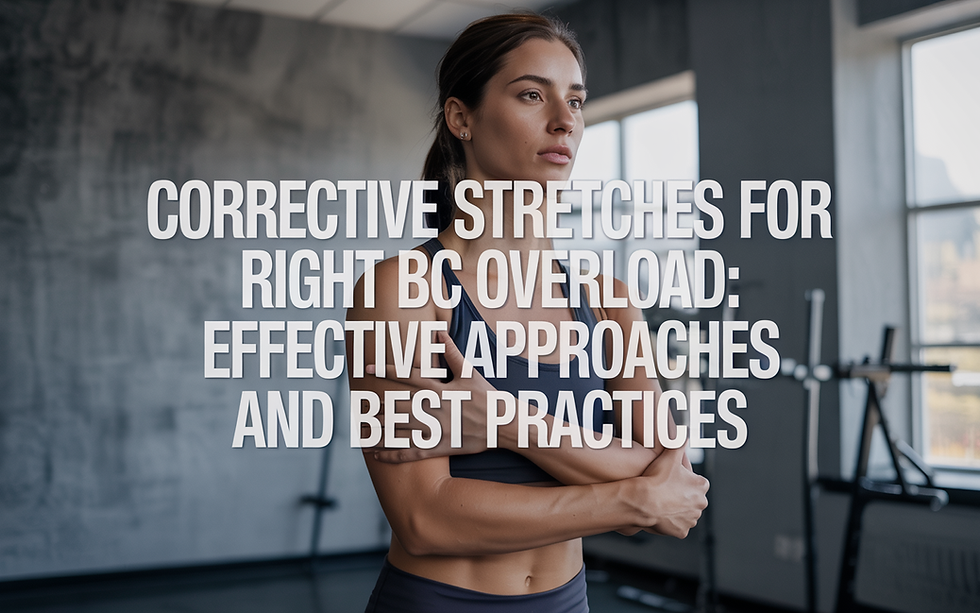Chronic Vs Acute Pain
- hesseryland
- Sep 7, 2025
- 3 min read
In this post I aim to highlight the differences between acute pain and chronic pain, as well as lay out just why previous interventions to relive your chronic pain may not have worked so well in the past. If you prefer to watch instead of read, here is a video discussing this same topic.
If you’ve been dealing with pain for weeks, months—or even years—and feel like physiotherapy just isn’t working, you’re not alone. Many people get stuck in the cycle of short-term relief with no lasting progress. The truth is, the failure often isn’t in the treatment itself, but in the way we understand and categorize pain.
Let’s break this down by exploring what pain really is, and why the distinction between acute and chronic pain changes everything about how it should be treated.
So, What Is Pain Really?
Most definitions of pain describe it as the nervous system’s response to harmful stimuli. That’s true, but a more useful way to think about pain is as a protection mechanism.
Pain is your body’s way of saying, “Hey, take it easy. Something’s not right here.” Especially in cases of acute pain, this message is fairly straightforward—there’s damage, and your body wants to protect the area while it heals.
Acute Pain: Cause and Effect
Acute pain is typically short-lasting and comes with a clear cause-and-effect relationship.
Examples:
You slipped on ice and banged your knee.
You strained your shoulder lifting something heavy overhead.
You twisted your back playing a sport like pickleball.
In these cases, there’s obvious tissue damage. It makes sense to isolate the problem area and apply standard physiotherapy techniques:
Stretching or foam rolling (inhibition)
Strengthening weak muscles (facilitation)
This isolated rehab model works well—for acute injuries.
Chronic Pain: A Totally Different Beast
Here’s where things get murky. Chronic pain doesn’t follow the same rules. Often, there’s no active tissue damage anymore. The muscles and joints might be structurally fine, but your brain is still sending pain signals.
Why? Because it’s trying to protect you from re-injury—whether the threat is real or not. It’s like your brain is saying:
“Don’t touch that stove!”…even though the stove isn’t hot anymore—and maybe isn’t even there.
That’s the key: chronic pain is often a neurological issue, not just a musculoskeletal one.
Why Traditional Physio Falls Short for Chronic Pain
Most physiotherapists treat chronic pain like it’s still acute. They prescribe the same isolated stretches, needling, or strength movements. While these might feel good short term, they don’t address the underlying neurological patterns driving the pain.
“Needling loosened me up, but it didn’t fix anything.”“Stretching felt good—but only temporarily.”“I kept doing the exercises, but the pain came back.”
If that sounds familiar, you’re not broken. You’re just stuck in a pattern—a pattern your brain and body have learned and repeated for so long, it’s now the default.
The Pattern Problem (And How to Break It)
Many chronic pain sufferers are unknowingly locked into dysfunctional postural and movement patterns—what systems like Postural Restoration (PRI) identify as things like:
Right-dominant stance
Left AIC / Right BC patterns
Lack of left AFIR (femur-internal rotation)
Poor ZOA (Zone of Apposition – diaphragmatic control)
These terms might sound technical, but the main idea is simple: your body is stuck doing the same thing over and over—and it’s reinforcing pain instead of resolving it.
Unless neurological retraining is added—actively, not passively—rehab just won’t stick.
What Actually Helps With Chronic Pain
Instead of just treating the symptoms or muscle tightness, we need to:
Retrain the brain: Teach it to stop overprotecting.
Reset movement patterns: Get out of the postural “ruts” you're stuck in.
Integrate breath and movement: Develop better control through things like diaphragmatic breathing (left ZOA).
This isn’t about just doing more exercises—it’s about doing the right ones, in the right context, with the right positional awareness.
Takeaway: Not All Pain Is Created Equal
If you’re stuck in pain and frustrated with physio, it’s worth asking:
Am I treating chronic pain with acute pain strategies?
Am I addressing the neurological and postural patterns behind the problem?
Is my treatment plan active or passive?
Understanding that chronic pain is more about the brain than the body changes everything.
Final Thoughts
Pain isn’t just a signal—it’s a message. But if you keep treating all pain the same way, you’ll keep getting the same results. Whether you’re a patient or a practitioner, recognizing the difference between acute and chronic pain is the first step toward truly effective treatment.


